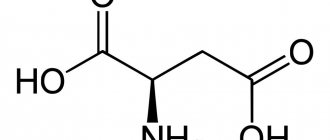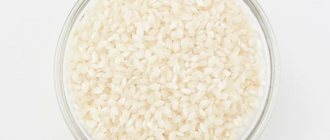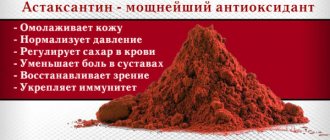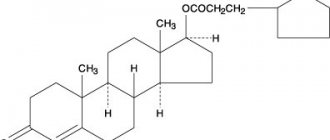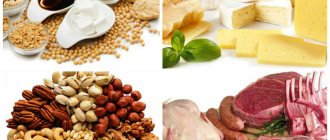What is cholesterol for?
Cholesterol takes part in many biochemical processes that occur in our body. It is necessary for the construction of new cells and the production of many vital hormones for humans.
Functions of cholesterol
- Building material for cell membranes.
- Strengthening the body's immune system. It protects red blood cells from destruction by hemolytic antibodies.
- Participates in the production of vitamin D (promotes the absorption of calcium and phosphorus, beneficial for bones and teeth), which is essential for healthy skin and normal functioning of the central nervous system.
- Production of steroid hormones such as testosterone, cortisol, estrogen and aldosterone.
- Helps in the production of bile acids, which are responsible for the digestion of food and the absorption of fats. Bile acids also contribute to the health and normal functioning of the intestinal microflora.
https://youtu.be/_br2s5oAzOk
Harmful effects of cholesterol
In 1999, about 530,000 deaths were recorded in the United States due to cardiovascular diseases, of which in half of the cases - as doctors do not exclude - high cholesterol was to blame. It was an increase in LDL and a decrease in HDL that led to heart pathologies leading to death.
Both of these fat-like substances constantly circulate in the blood and complement each other’s functions. That's what cholesterol is. But if the balance between them is disturbed, harmful cholesterol is deposited on the walls of the arteries, they harden - diseases such as atherosclerosis develop. At first, the fat deposits are loose, but as more and more LDL is deposited, they become fibrous and calcium salts accumulate in them. In this case, the heart can suffer doubly:
- The vascular lumen narrows due to the accumulation of calcium salts on the walls of the arteries (scientific calcification) and loses its elasticity (stenosis). Less blood flows to the heart, which means less oxygen. If a narrowing of the coronary arteries occurs, angina pectoris develops - heart pain, shortness of breath, and general discomfort. If the blockage is complete, myocardial infarction may occur due to insufficient blood supply. So what is cholesterol for?
- Sometimes the plaques break off - then a dense clot is formed, which circulates along with the blood and can also clog any of the arteries. Depending on which vessels are affected, the patient has a heart attack or stroke.
Good and bad cholesterol, what are the differences?
All cholesterol is usually divided into two groups: good and bad. So, good cholesterol serves to remove bad cholesterol . But what are both of these types?
- “Bad” cholesterol (LDL, LDL) is low-density lipoprotein. Their job is to transport cholesterol from the liver to the rest of the body's cells. If there is too much of it, the excess “grows” on the walls of blood vessels, which in the future can lead to serious disorders and cause atherosclerosis.
- “Good” cholesterol (HDL, HDL) is high-density lipoprotein. They, in turn, attract excess “bad” cholesterol from tissues and blood vessels, and then transfer them to the liver, where they are disposed of. This is necessary to support the normal functioning of the cardiovascular system and prevent heart disease.
However, this division into “good” and “bad” is very arbitrary. An imbalance of any type leads to serious destabilization of the body. The only difference is that a lack or excess of “bad” cholesterol entails more dangerous risks than a lack of “good” cholesterol.
What is the norm in the tests?
A healthy person has a target cholesterol level shown in the table:
| Floor | Total cholesterol (mmol/l) | LDL | HDL |
| Female | 3,61—5,25 | 3—4 | 0,91—1,91 |
| Male | 3,61—5,25 | 2,24—4,81 | 0,71—1,71 |
The formula for calculating cholesterol consists of the following mathematical steps:
- High-density lipids must be subtracted from total cholesterol.
- The result must be divided by the LDL level.
This number shows the ratio of different fractions to each other; in the analysis it is designated as the atherogenic index. The normal value is between 2 and 2.8. The lower level can be 1.5, the upper level can be 3.5. More often, values change in people over 40 years of age without signs of atherosclerosis. Psychosomatics, which constitutes an important link in the development of diseases, can lead to the appearance of symptoms of the disease without changing the level of lipoproteins.
What are the norms for cholesterol in the blood?
Unfortunately, we tend to solve problems as they arise and do not care about prevention. However, it is important to know the measures that exist for each type of cholesterol and not violate them.
However, in practice these indicators differ by age and gender (see tables 1 and 2). So, for example, blood cholesterol standards for women are slightly higher than for men. But in a woman’s body it collects on the walls of blood vessels to a lesser extent. This process is explained by the increased work of female sex hormones.
According to statistics, about 60% of older people have increased LDL and decreased HDL.
Table 1
table 2
The pregnancy period may be accompanied by increased levels. Do not be alarmed, this is a normal phenomenon and it occurs due to hormonal changes.
Reasons for deviations
The indicator may increase against the background of renal pathologies in humans.
Increased total direct cholesterol occurs due to the following factors:
- poor nutrition;
- familial hypercholesterolemia;
- generalized atherosclerosis;
- endocrine pathologies;
- kidney diseases;
- organic disorders of the liver.
Why is high blood cholesterol dangerous?
High levels of cholesterol in the blood create a risk of developing cardiovascular diseases, such as:
- Heart attack or stroke (obstruction of blood flow to the heart or brain)
- Atherosclerosis (clogging of the arteries)
- Angina (lack of blood flowing through the heart muscle)
- Coronary heart disease (lack of oxygen to the heart)
Self-medication in such cases can only do harm, but it’s definitely worth thinking about your lifestyle.
Blood test for cholesterol
The main indications for blood tests for lipid spectrum and cholesterol levels are
- liver pathologies,
- atherosclerosis and diseases of the heart, blood vessels,
- diseases of the pancreas, kidneys,
- endocrine diseases,
- obesity.
Requirements for taking the analysis
The analysis is also taken during examination and annual medical examination.
Blood for analysis is taken in the morning, after sleep, strictly on an empty stomach; after eating, the level of blood lipids will always be elevated and the results will be distorted.
At least 10 hours must pass from the last meal to the time the test is taken, therefore, patients are explained that the last time before the test is taken they should have dinner no later than 19 hours, and not eat anything in the morning, you can only drink water.
It is forbidden to drink alcohol for at least two days before the test; you should refrain from smoking at least two hours before the blood draw.
Blood is collected using disposable instruments from a vein; immediately after blood collection, it is placed in a sterile tube with a special solution. The analysis is carried out on the same day, so that the results are most accurate - within the next 2-3 hours from the moment of collection.
How can you reduce cholesterol?
Our body is a very complex system of interconnected biochemical processes, and for all this to function properly, it is necessary to maintain a balance of proteins, fats and carbohydrates. This does not mean that we need to COMPLETELY eliminate fats, or significantly reduce/increase our intake of carbohydrates or proteins. No, it's about eating right and choosing foods that will give you quality fats, proteins and carbohydrates!
- Find out more: What are proteins and what are their functions in the body?
How to reduce cholesterol without using drugs?
Starting with simple steps, you can radically restore the balance of cholesterol in the blood without resorting to the help of medications or doctors.
- Stop drinking and smoking.
- Play sports.
- Get rid of excess weight.
- Switch to proper and healthy eating.
- Reduce your consumption of sweet and white bread.
- Make sure you have enough protein in your diet.
In many cases, this is already enough to bring many indicators back to normal and return the body to full functioning.
Medicines to lower cholesterol
If cholesterol imbalance has already caused complications, the following medications may help, but be sure to consult your doctor first.
- Pitavastatin
- Lovastatin
- Atorvastatin
- A nicotinic acid
- Simvastatin
- Pravastatin
- Cerivastatin
Correction of cholesterol levels
You can lower your cholesterol levels primarily through dietary restrictions. It is necessary to exclude fatty, refined and cholesterol-rich foods from the diet. It is necessary to give up sauces and mayonnaise, sausages, and confectionery.
It is recommended to eat lean meat, lean fish, skinless poultry, egg whites, and enrich food with vegetable oils, vegetables and fruits, and grains.
If dietary correction methods are ineffective, medications are prescribed to lower cholesterol levels:
- nicotinic acid preparations,
- statins,
- drugs that bind bile acids in the intestine,
- fibric acid derivatives.
The drugs have an impressive list of side effects, therefore, medical supervision over their use is necessary.
What foods lower cholesterol?
Despite the fact that we get only a fifth of cholesterol from food, it still indirectly affects the state of affairs and biochemical processes occurring in the body.
Let me remind you that cholesterol is not broken down in water (and therefore in the blood), but it is broken down in fats, which is what we will use, only in our case these will be “correct” healthy fats.
- Eggs with yolk
- Milk (3-9% fat)
- Fatty sea fish
- Nuts
- Avocado
- Olive oil
- Fat cottage cheese
- Fish oil (if possible, choose high-quality fish oil with 50% or more omega-3 fatty acids)
What are the consequences of impaired cholesterol synthesis?
With a lack of cholesterol, women experience difficulty in getting pregnant and carrying it to term. The division of embryonic cells is difficult; it either dies and is excreted from the mother’s body, because it develops with pathologies.
Insufficient cholesterol produced by the skin leads to early aging and withering, brittle bones, nails, teeth, and brittle hair.
The process can be explained by the fact that cholesterol promotes the synthesis of vitamin D, which is involved in calcium metabolism. If there is not enough vitamin D, then the absorption of calcium is reduced, and without it the condition of bones, teeth, hair and nails worsens.
So, the liver is responsible for producing the bulk of cholesterol in the body. In second place is the small intestine. The third is divided between the kidneys, skin, adrenal glands, and gonads. Any deviations in the synthesis of this substance are fraught with health problems.
Low-density lipoproteins or bad cholesterol
Bad cholesterol, or low-density lipoprotein, consists mainly of cholesteryl ester, but also contains protein, free cholesterol and triglycerols. Their main task is to transport cholesterol to tissues and organs to create cell membranes.
In case of lipid metabolism disorders that occur under the influence of certain factors, low-density lipoproteins begin to accumulate on the vascular wall, gradually stratifying it. This, in turn, serves as a favorable condition for the attachment of excess cholesterol to sites of damage. This is how an atherosclerotic plaque is formed.
LDL is characterized by the fact that it retains cholesterol in the blood. To reduce low-density lipids, which have a negative impact on health, you need to reduce your intake of fatty foods, increase physical activity and follow the principles of proper nutrition. It is important to find out why LDL levels in the blood increase.
The following factors contribute to this:
- smoking;
- poor nutrition;
- sedentary lifestyle;
- metabolic disease;
- obesity.
How to increase good cholesterol and lower bad cholesterol
Sometimes cholesterol levels are a consequence of various systemic diseases. Such patients require complex treatment, the regimen of which depends on the underlying pathology. But in many cases, the cause of high sterol is poor diet and unhealthy lifestyle. Therefore, normalization of the concentration of bad and good cholesterol begins with a review of the diet and habits. Nutrition with high sterol should meet the following rules:
- No trans fats. Even small amounts of harmful lipids ingested daily gradually begin to accumulate in the body. The changes caused by trans fats significantly increase the likelihood of developing atherosclerosis.
- Limit foods containing saturated fats. Coconut, palm oil, animal fat, red meat, cream, full-fat cottage cheese, cheese, and butter contain large amounts of saturated fatty acids. They do not have high nutritional value and contribute to an increase in the concentration of total cholesterol and LDL. Instead of the listed sources of fat, it is recommended to eat more seeds, nuts, and vegetable oils.
- Adequate sources of fiber. Vegetables, cereals, and legumes are rich in dietary fiber and vitamins.
- Fatty fish 2 times/week. Herring, mackerel, anchovy, mackerel, salmon, tuna are the leaders in the content of omega-3 fatty acids. Flax seeds and chia seeds are also good sources that are suitable even for vegans. Omega-3 fatty acids normalize cholesterol metabolism and improve the functioning of the heart muscle.
- Minimum alcohol. Excess alcohol has a detrimental effect on the content of beneficial fractions of cholesterol, but it perfectly increases harmful ones. Therefore, it is necessary to observe the measure. If you can’t imagine life without alcohol, treat yourself to a glass of red wine, preferably dry.
Diet is not the only way to fight atherosclerosis without drugs. You can greatly enhance its effect by following these tips:
- Move more. Even if you don’t have time to play sports, walking is an excellent alternative to exercise, although not a complete replacement;
- Quit smoking. Cigarette components are real poison for blood vessels. In addition, smoking increases LDL levels and decreases HDL levels. Worst combination;
- Watch your weight. If it exceeds the norm, try to get rid of extra pounds. In addition to normalizing cholesterol, this will help relieve stress on the heart;
- Get a lipid profile every 4-6 years. Abnormal cholesterol levels detected in time can be easily corrected.
If diet and lifestyle changes do not help, the patient is prescribed medications. The first choice drugs are statins. They block the production of cholesterol by the liver. Most often, people are prescribed one of three statins: rosuvastatin, atorvastatin, and simvastatin.
Other drugs that normalize fat metabolism are prescribed to increase the effectiveness of statins or in cases of intolerance to them. Most often, the alternative is fibrates, less often - fatty acid sequestrants, cholesterol absorption inhibitors, omega-3 fatty acid preparations.
The patient is also prescribed medications to help cope with symptoms, prevent the development of complications, and help the body recover.
What is cholesterol?
Cholesterol, bad and good, is a combination of chemical components that every organism requires as a unique biological building material. It goes to restore the cell membrane and hormones, among which are testosterone and estrogen.
The process of producing the substance is carried out in the liver, this is approximately 70-85%, the remaining small amount can be obtained from food, eating eggs, meat, fish, dairy products, that is, food of animal origin, since plant products do not contain this substance.
The liver not only produces cholesterol, but also regulates its total amount. Movement process
substances in the body is carried out according to the following scheme. Immediately after eating, the substance is absorbed into the liver. From there it is secreted into the body as needed.
If a lot of cholesterol accumulates, it is converted into so-called plaques, located along the inner walls of blood vessels and veins. On this basis, they are greatly narrowed, which is why important organs receive much less nutrients than they need, which automatically causes a malfunction in their work, causing great harm to the entire body.
What is cholesterol and how does it get into the blood?
Cholesterol is a fat-like substance that can end up in the blood in two ways:
Method one. 20% comes from foods containing animal fats. These are butter, cottage cheese, eggs, cheeses, meat, fish, etc.
Method two. 80% is formed in the body, and the main factory for the production of cholesterol is the liver.
And now attention:
Numerous studies have proven that the cholesterol content in food does not have a significant effect on its level in the blood, since most of it is endogenous cholesterol.
In 1991, the authoritative medical journal “The New England Journal of Medicine” published an article by Professor Fred Kern. It was about an 88-year-old grandfather who ate 25 eggs a day for 15 years. In his medical record there were many blood tests for cholesterol with completely normal values: 3.88 - 5.18 mmol/l.
Additional research was conducted and it was found that with such a man’s love for eggs, his liver simply reduced cholesterol synthesis by 20%.
History also knows the results of autopsies of thousands of corpses of prisoners of fascist concentration camps: atherosclerosis was discovered in all of them, and in the most severe form. Where from if they were starving?
The hypothesis that atherosclerosis develops from fatty foods was put forward 100 years ago by the Russian scientist Nikolai Anichkov, conducting experiments on rabbits. He fed them a mixture of eggs and milk, and the poor fellows died from atherosclerosis.
How he came up with the idea of feeding vegetarians with foods that are not typical for them is unknown. But since then no one has confirmed this hypothesis, although it has not been pushed forward.
But now there is a reason to “treat” cholesterol.
For many years it has been considered the main culprit in deaths from cardiovascular diseases. And for some reason no one is bothered by the fact that half of the people who die from myocardial infarction have normal cholesterol levels.
By the way, Anichkov himself also died of a myocardial infarction.
